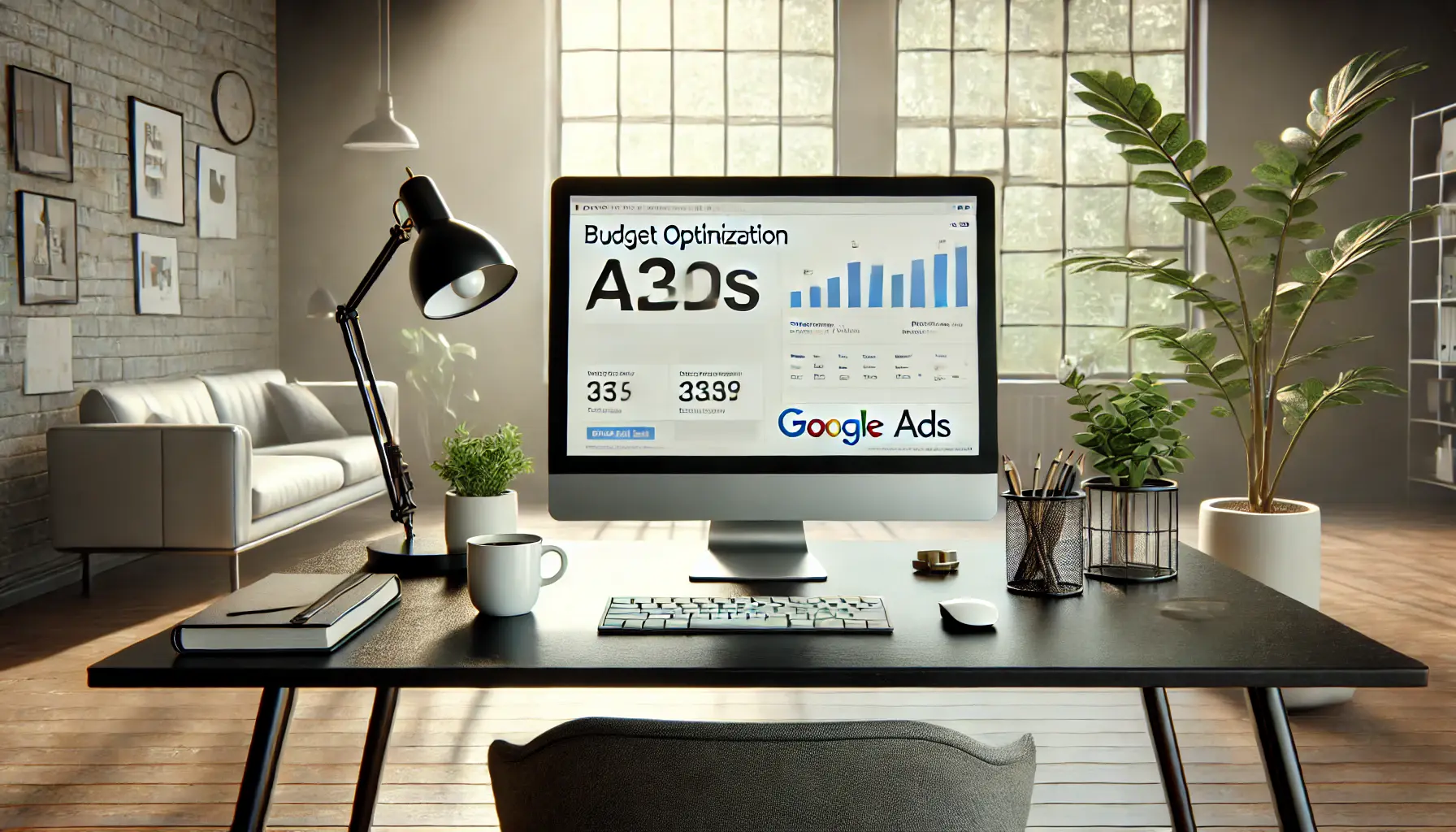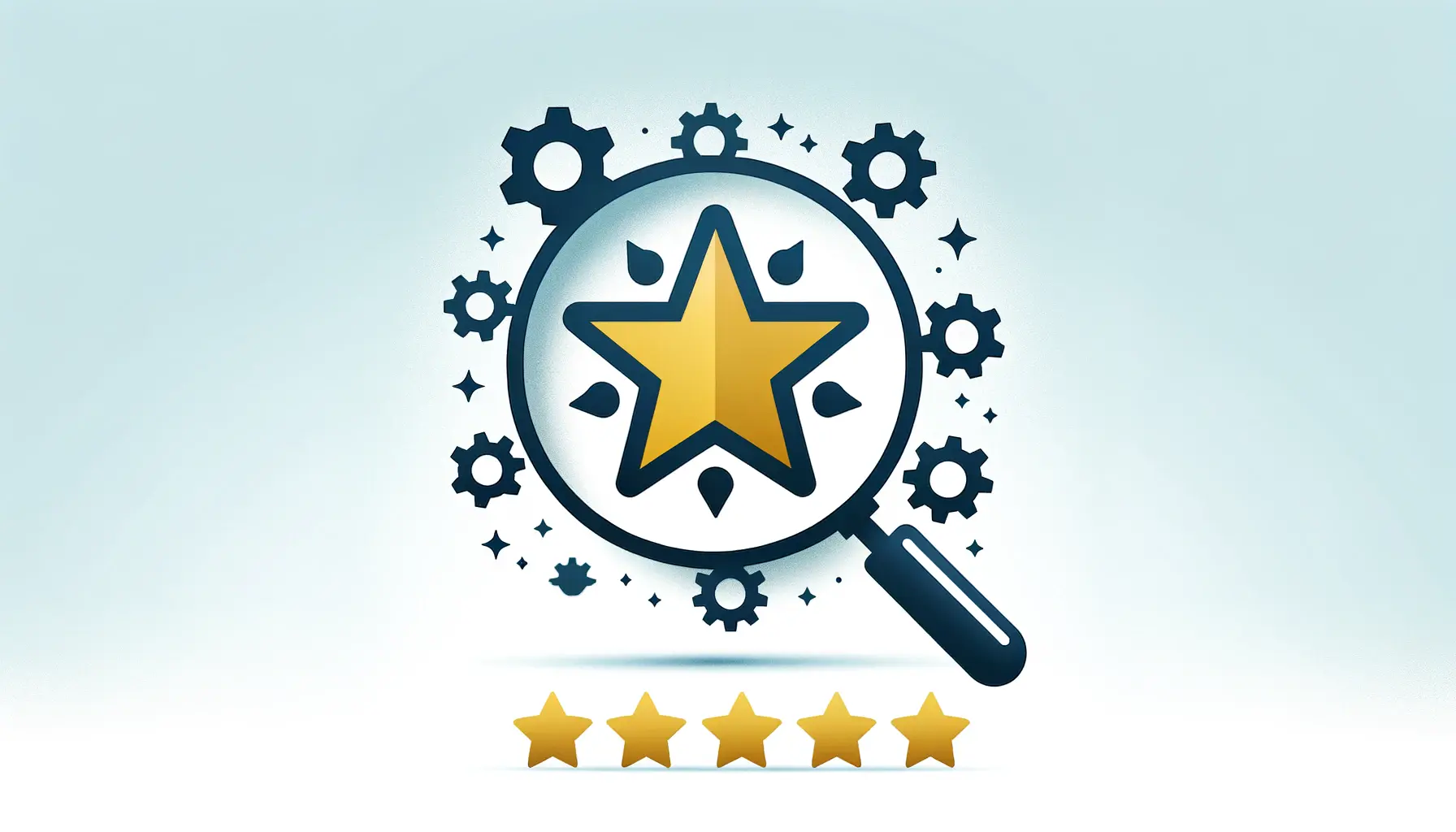Understanding and optimizing your website’s crawl budget is crucial for ensuring that search engines can efficiently discover and index your content.
This process, known as crawl budget optimization, plays a pivotal role in Technical SEO, directly impacting how well your site performs in search engine results.
The concept of crawl budget may seem complex at first, involving numerous factors that influence how search engine bots prioritize and crawl web pages.
However, with the right techniques and strategies, it’s possible to make your site more crawl-friendly, thereby enhancing its visibility and ranking on search engines like Google.
The essence of crawl budget optimization lies in balancing the resources search engines allocate to your site with the need to have the most important and relevant pages indexed.
This balance is not just about increasing the quantity of crawled pages but ensuring that the quality of these pages meets the search engines’ criteria for valuable content.
By focusing on key optimization techniques, webmasters and SEO professionals can significantly improve their site’s interaction with search engine bots, leading to better indexing and, ultimately, a stronger online presence.
- Crawl Budget and Its Importance
- Site Structure for Better Crawling
- Page Speed for Improved Crawling
- Managing Content Quality and Relevance
- Utilizing Link Building and External Signals
- Implementing Technical SEO Best Practices
- Monitoring and Adjusting Strategies Based on Analytics
- Maximizing Your Site’s Potential Through Crawl Budget Optimization
- Crawl Budget Optimization FAQs
Crawl Budget and Its Importance
The term “crawl budget” refers to the number of pages a search engine bot, like Googlebot, crawls and indexes on a website within a certain timeframe.
This budget is not infinite; search engines allocate a specific amount of resources to each site, influenced by the site’s size, the health of its links, and the freshness of its content.
The optimization of this budget is crucial for large websites or those that frequently update or publish new content, ensuring that the most important pages are prioritized for crawling and indexing.
Several factors can affect your site’s crawl budget.
These include duplicate content, broken links, and non-optimized pages that can consume a significant portion of the budget without adding value to your site’s SEO performance.
By identifying and addressing these issues, you can free up resources for the pages that truly matter, enhancing your site’s visibility and search engine ranking.
This process involves a strategic approach, focusing on both the technical and content aspects of your site to create a more efficient crawling and indexing pathway for search engines.
Key Factors Influencing Crawl Budget
Several key factors influence your website’s crawl budget.
These include site speed, the health of internal and external links, the presence of duplicate content, and the overall structure of your website.
Sites with fast loading times, clean link profiles, unique content, and a well-organized hierarchy are more likely to be crawled efficiently.
Conversely, issues like slow site speed, broken links, and duplicate content can hinder the crawling process, wasting valuable crawl budget on pages that do not contribute to your site’s SEO goals.
Another crucial aspect is the management of your site’s robots.txt file and the use of meta tags.
Properly configuring these elements can direct search engine bots to your most important pages and prevent them from wasting resources on pages that are not meant to be indexed, such as admin pages or duplicate versions of existing content.
This strategic direction not only optimizes your crawl budget but also ensures that your site’s most valuable content is readily accessible to search engines.
Optimizing your site’s crawl budget is essential for improving its SEO performance, focusing on enhancing site speed, link health, content uniqueness, and structural organization.
Site Structure for Better Crawling
One of the most effective strategies for optimizing your crawl budget involves refining your site’s structure.
A well-organized website not only enhances user experience but also allows search engine bots to crawl more efficiently.
By simplifying the navigation and organizing content logically, you can ensure that search engines prioritize your most important pages.
This part of optimization focuses on creating a hierarchy that aligns with your SEO goals, making it easier for bots to discover and index your content.
Implementing a streamlined site structure involves several key steps, each aimed at reducing the depth of important content and making it more accessible to both users and search engines.
This approach not only improves the crawlability of your site but also its overall SEO performance.
Key Steps to Streamline Site Structure
- Use a Flat Website Architecture: Minimize the number of clicks required to reach any page on your site. A flat architecture ensures that important pages are no more than a few clicks away from the homepage, making them more accessible to search engines.
- Implement a Logical URL Structure: URLs should be intuitive and reflective of the site’s hierarchy, using keywords relevant to the content of each page. This clarity helps search engines understand and prioritize content more effectively.
- Optimize Site Navigation: Clear and consistent navigation menus are crucial for guiding both users and search engine bots through your site. Including a well-structured sitemap further aids in this process, offering a roadmap of your site’s content.
- Employ Internal Linking Wisely: Internal links not only help with site navigation but also distribute page authority throughout your site. Use descriptive anchor text and link to relevant content to enhance the SEO value of your pages.
- Prune and Consolidate Content: Regularly review your site for outdated, duplicate, or low-quality content. Removing or consolidating such content can free up crawl budget for more valuable pages and improve your site’s overall SEO health.
By focusing on these areas, you can create a site structure that is both user-friendly and optimized for search engines.
This optimization ensures that your most important content is easily discoverable, improving your site’s visibility and ranking in search engine results pages (SERPs).
A strategic approach to site structure and navigation can significantly impact your crawl budget optimization efforts, making your content more accessible and improving your site’s SEO performance.
Page Speed for Improved Crawling
Page speed is a critical factor in crawl budget optimization.
Search engines prioritize websites that load quickly, as fast-loading pages offer a better user experience.
A site that loads efficiently is more likely to be crawled more frequently, as search engine bots can navigate through more pages in less time.
This efficiency not only benefits your crawl budget but also contributes positively to your site’s overall SEO and user satisfaction.
Improving page speed requires a comprehensive approach, addressing both front-end and back-end aspects of your website.
From optimizing images to minimizing code, each action taken to enhance page speed can have a significant impact on how effectively search engines crawl and index your site.
Strategies to Boost Page Speed
- Optimize Images: Large images can significantly slow down your site. Use compression tools to reduce image file sizes without sacrificing quality, and consider implementing lazy loading for images below the fold.
- Minimize HTTP Requests: Reduce the number of elements on your pages, such as scripts, stylesheets, and images. Combine files where possible, and use CSS sprites to create a template for images that you use frequently across your site.
- Enable Browser Caching: Allowing browsers to store certain elements of your site locally can drastically reduce load times for repeat visitors. Set appropriate expiration dates for cached resources to ensure users receive the most up-to-date content.
- Use a Content Delivery Network (CDN): CDNs distribute your content across multiple servers worldwide, reducing the distance between your site and your users. This setup can significantly speed up loading times for users in different geographical locations.
- Minify CSS, JavaScript, and HTML: Removing unnecessary characters from your code (like whitespace, comments, and unused code) can decrease file sizes and improve loading times. Tools and plugins are available to automate this process.
By implementing these strategies, you can significantly improve your site’s page speed, making it more attractive to both users and search engines.
Faster loading times not only enhance the user experience but also allow search engine bots to crawl more pages within their allocated budget, improving your site’s visibility and ranking in the process.
Improving page speed is a direct investment in your site’s crawlability and overall SEO health, leading to better indexing and higher search engine rankings.
Managing Content Quality and Relevance
At the heart of crawl budget optimization lies the imperative to manage content quality and relevance.
Search engines are designed to serve the most valuable and pertinent information to users.
Therefore, websites that consistently produce high-quality, relevant content are more likely to be rewarded with frequent crawls and better indexing.
This focus on content not only enhances a site’s appeal to search engines but also fosters a positive user experience, encouraging engagement and return visits.
Creating and maintaining content that meets these criteria requires a strategic approach, emphasizing originality, depth, and alignment with user intent.
By ensuring that your content directly addresses the needs and interests of your target audience, you can improve your site’s search engine performance and make the most of your crawl budget.
Strategies for Enhancing Content Quality
- Focus on Originality: Publish content that offers unique insights, information, or perspectives. Avoid duplicating content from other sources, as search engines prioritize originality.
- Ensure Depth and Comprehensive Coverage: Detailed, in-depth content is more likely to address user queries effectively. Aim for comprehensive coverage of your topics, providing value that goes beyond superficial analysis.
- Align with User Intent: Understand the intent behind search queries related to your niche and tailor your content to meet these needs. Whether users are seeking information, looking to make a purchase, or solving a problem, your content should provide relevant and useful solutions.
- Regularly Update Content: Keep your content fresh and up-to-date. Regular updates signal to search engines that your site is active and relevant, encouraging more frequent crawling.
- Use Multimedia Elements Wisely: Enhance your content with images, videos, and infographics to improve engagement and provide value. Ensure these elements are optimized for speed and accessibility.
By prioritizing content quality and relevance, you can significantly impact your site’s SEO performance.
High-quality content attracts more links, shares, and engagement, further signaling to search engines the value and authority of your site.
This virtuous cycle not only improves your crawl budget utilization but also drives organic traffic and enhances your site’s visibility and ranking.
Quality and relevance are the cornerstones of effective content strategy, directly influencing how search engines perceive and prioritize your site in the crawling and indexing process.
Utilizing Link Building and External Signals
Link building is a cornerstone of search engine optimization and plays a pivotal role in crawl budget optimization.
External links to your site act as endorsements, signaling to search engines that your content is valuable and worth indexing.
A robust link profile not only enhances your site’s authority and relevance but also encourages search engines to allocate more resources to crawling your site.
This increased attention can lead to more comprehensive indexing and, ultimately, better visibility in search engine results.
Effective link building requires a strategic approach, focusing on acquiring high-quality links from reputable sources.
These efforts should be complemented by the use of external signals, such as social media engagement and mentions, to further boost your site’s visibility and crawl frequency.
Strategies for Effective Link Building
- Create Link-Worthy Content: The foundation of any successful link-building strategy is high-quality, engaging content that others want to link to. Focus on creating valuable resources, original research, and insightful articles that address the needs and interests of your audience.
- Engage in Guest Blogging: Contributing guest posts to reputable sites in your industry can help you gain backlinks and expose your content to a wider audience. Ensure that your contributions are valuable and relevant to the host site’s audience.
- Leverage Social Media: Promote your content on social media platforms to increase visibility and engagement. While social shares are not a direct ranking factor, they can lead to more organic links and mentions, indirectly benefiting your SEO.
- Participate in Industry Forums and Discussions: Engaging with your community through forums and discussions can help you establish authority and gain backlinks. Provide helpful answers and insights, and where appropriate, link back to relevant content on your site.
- Monitor and Reclaim Lost Links: Use tools to monitor your link profile for lost or broken links. Reaching out to site owners to fix or replace these links can help maintain your site’s link equity and authority.
By implementing these link-building strategies, you can enhance your site’s authority, improve its visibility, and encourage search engines to crawl and index your content more effectively.
A strong link profile not only benefits your crawl budget but also contributes to your overall SEO success, driving organic traffic and improving your rankings in search engine results pages.
Remember, the quality of links is far more important than quantity. Focus on building relationships and creating valuable content that naturally attracts high-quality backlinks.
Implementing Technical SEO Best Practices
Technical SEO is a critical component of crawl budget optimization, encompassing a wide range of practices designed to improve a website’s crawlability and indexability.
By addressing technical aspects, such as site architecture, coding, and server response times, you can create a more efficient pathway for search engines to discover and index your content.
Implementing technical SEO best practices ensures that search engine bots can access, crawl, and interpret your site without unnecessary obstacles, making the most of your allocated crawl budget.
Technical optimizations require a detailed understanding of how search engines work and how they interact with your site.
From optimizing your robots.txt file to implementing structured data, each technical element plays a role in enhancing your site’s SEO performance.
Key Technical SEO Strategies
- Optimize Robots.txt and Use Meta Tags: Ensure your robots.txt file is correctly configured to allow search engine bots to crawl your most important pages. Use meta tags to control the indexing of specific pages, directing bots away from duplicate or irrelevant content.
- Improve Site Speed: As mentioned earlier, site speed is a crucial factor for both user experience and crawl efficiency. Implement technical solutions to minimize load times, such as optimizing images, leveraging browser caching, and minimizing server response times.
- Ensure Mobile-Friendliness: With the increasing importance of mobile search, ensuring your site is mobile-friendly is essential. Use responsive design to provide a seamless experience across all devices and improve your site’s accessibility for both users and search engines.
- Implement Structured Data: Structured data helps search engines understand the content of your pages, enhancing your visibility in search results. Use schema markup to highlight important information, such as articles, products, and events, making it easier for search engines to index and display your content.
- Address Technical Errors: Regularly audit your site for technical issues, such as broken links, duplicate content, and incorrect redirects. Fixing these errors can prevent wasted crawl budget and improve your site’s overall SEO health.
By focusing on these technical SEO best practices, you can significantly improve your site’s crawlability and indexability.
This optimization not only makes your site more attractive to search engines but also enhances the user experience, contributing to higher engagement, better rankings, and increased traffic.
Neglecting technical SEO can lead to wasted crawl budget and missed opportunities for indexing and ranking. Regular audits and optimizations are essential for maintaining an efficient and effective online presence.
Monitoring and Adjusting Strategies Based on Analytics
Effective crawl budget optimization is not a set-it-and-forget-it task; it requires ongoing monitoring and adjustment based on analytics and performance data.
By regularly analyzing your site’s crawl statistics, search engine rankings, and user behavior metrics, you can identify areas for improvement and refine your strategies to better align with search engine algorithms and user expectations.
This iterative process ensures that your optimization efforts remain effective over time, adapting to changes in search engine behavior, website updates, and evolving user needs.
Utilizing tools like Google Search Console, webmasters can gain valuable insights into how search engines interact with their site.
These tools provide data on crawl rates, indexation issues, and search performance, offering a roadmap for further optimization efforts.
Key Analytics to Monitor for Crawl Budget Optimization
- Crawl Errors: Monitor your site for crawl errors and address them promptly. Errors like 404s can waste your crawl budget and negatively impact user experience.
- Crawl Stats: Analyze crawl stats to understand how search engines are accessing your site. Look for trends in crawl rates and adjust your optimization strategies accordingly.
- Index Coverage: Keep an eye on your index coverage report to ensure that your important pages are being indexed. Address any issues that prevent pages from being indexed, such as noindex tags or blocked resources.
- Page Speed Insights: Use tools like Google PageSpeed Insights to monitor your site’s performance. Slow loading times can hinder crawling and user engagement, so prioritize fixes that improve speed.
- Search Performance: Review your search performance data to understand how users are finding your site. Use this information to refine your content and SEO strategies, focusing on high-performing keywords and topics.
By staying informed and responsive to analytics, you can continuously improve your site’s crawl budget optimization, ensuring that your content is discovered, indexed, and ranked effectively.
This proactive approach not only enhances your SEO performance but also supports a better user experience, driving engagement and conversions.
Regular analysis and adaptation are key to maintaining an effective SEO strategy. Use analytics to guide your optimization efforts, ensuring that your site remains competitive and visible in an ever-changing digital landscape.
Maximizing Your Site’s Potential Through Crawl Budget Optimization
In the intricate dance of search engine optimization, mastering the art of crawl budget optimization emerges as a critical strategy for enhancing your website’s visibility and performance.
This comprehensive journey through the facets of crawl budget optimization has illuminated the multifaceted approach required to ensure search engines not only find but also prioritize your content in the vast digital ecosystem.
By focusing on the technical, content, and link-building aspects of SEO, webmasters can create a synergistic effect that boosts their site’s crawl efficiency and, ultimately, its ranking in search results.
Strategic Insights for Long-Term Success
Effective crawl budget optimization is not merely about attracting search engine bots to your site; it’s about guiding them to your most valuable content in the most efficient way possible.
This requires a delicate balance of technical prowess, content excellence, and strategic outreach.
Websites that excel in these areas are more likely to see their content indexed and ranked favorably, driving organic traffic and achieving their SEO goals.
Key Takeaways for Optimizing Crawl Budget
- Structure your site with a clear hierarchy and navigational paths to ensure search engines can easily discover and index your content.
- Enhance page speed and mobile-friendliness to improve user experience and encourage search engines to crawl more pages.
- Produce high-quality, relevant content that addresses the needs and interests of your target audience, making your site a valuable resource that search engines want to index.
- Build a robust link profile with high-quality backlinks and utilize social media to increase visibility and drive traffic.
- Regularly monitor your site’s performance using tools like Google Search Console to identify and address crawl errors, improve index coverage, and optimize based on search performance analytics.
As the digital landscape continues to evolve, so too will the strategies for optimizing crawl budgets.
Staying informed of the latest SEO trends and algorithm updates is crucial for maintaining a competitive edge.
By adopting a holistic approach to crawl budget optimization, you can ensure that your site not only attracts search engine attention but also delivers the kind of user experience that leads to engagement, conversions, and, ultimately, success in the digital age.
In conclusion, crawl budget optimization is a nuanced and dynamic component of SEO that requires ongoing attention and adaptation.
By implementing the strategies outlined in this article, you can enhance your site’s visibility, improve its search engine ranking, and achieve your digital marketing objectives.
Remember, the goal is not just to increase the quantity of crawls but to strategically guide search engine bots to the content that matters most, ensuring your site’s most valuable pages are discovered, indexed, and ranked effectively.
Want your website to top Google search rankings? Leave the SEO to our professional agency!
Crawl Budget Optimization FAQs
Explore the most common inquiries surrounding crawl budget optimization to enhance your website’s SEO performance.
Crawl budget refers to the number of pages search engines will crawl on your website within a certain timeframe, affecting SEO.
It determines how often search engines visit your site, impacting how quickly content is indexed and ranked.
Use Google Search Console to view crawl stats and understand how search engines are interacting with your site.
Yes, by improving site speed, reducing errors, and ensuring high-quality content, you can influence your crawl budget positively.
A well-organized site structure helps search engines crawl more efficiently, making better use of your crawl budget.
Excessive or improper redirects can waste crawl budget by leading search engines through unnecessary loops.
Yes, high-quality backlinks can signal search engines to crawl and index your site more frequently, optimizing your crawl budget.
High-quality, relevant content encourages search engines to crawl and index your site more effectively, utilizing your crawl budget well.












